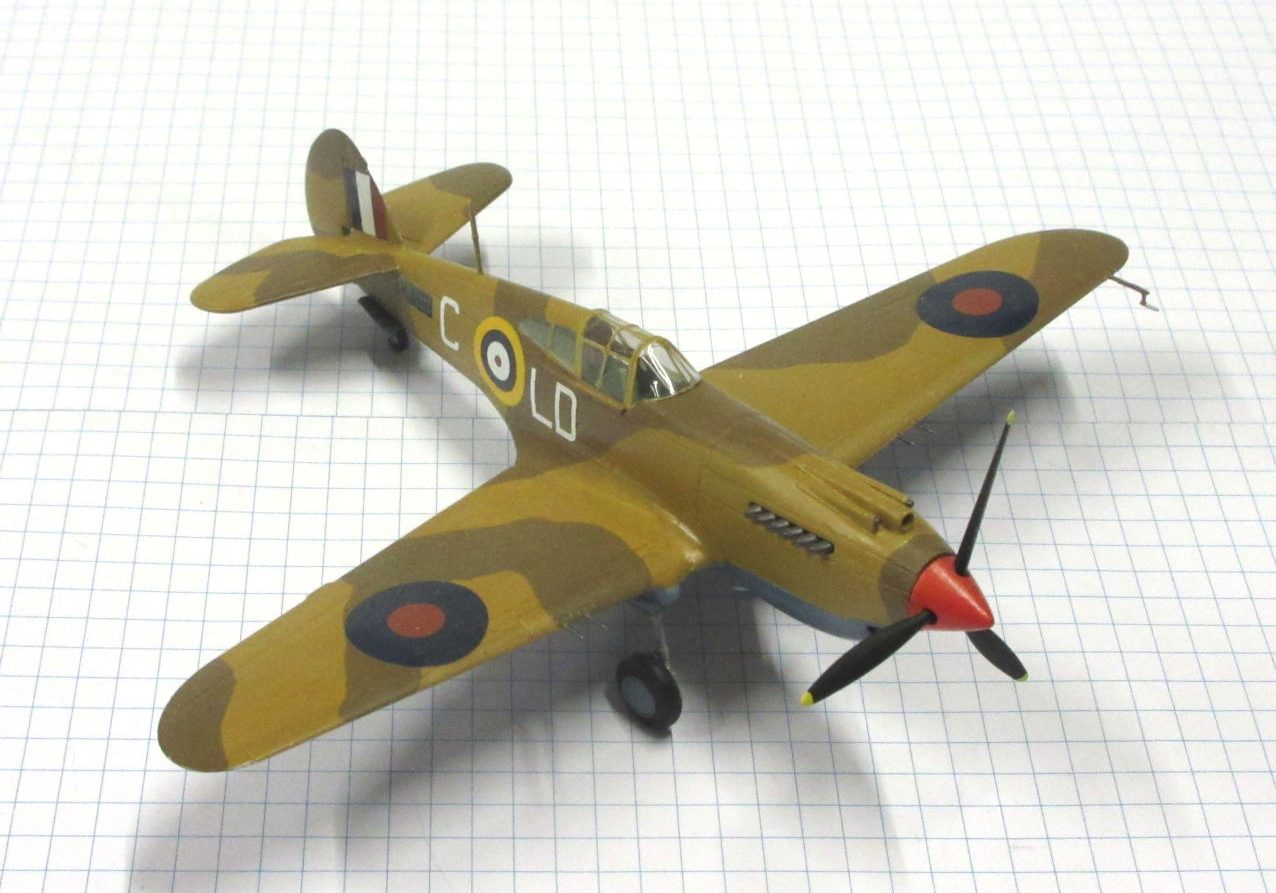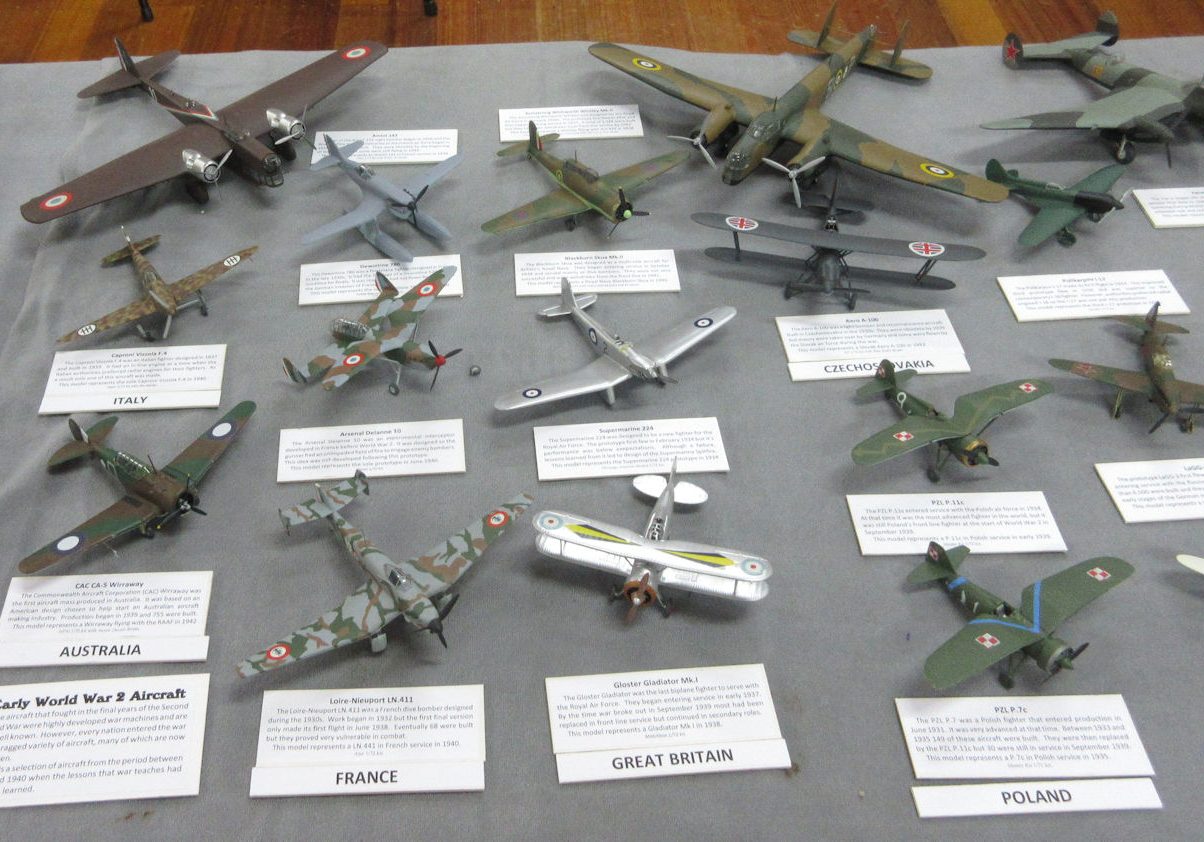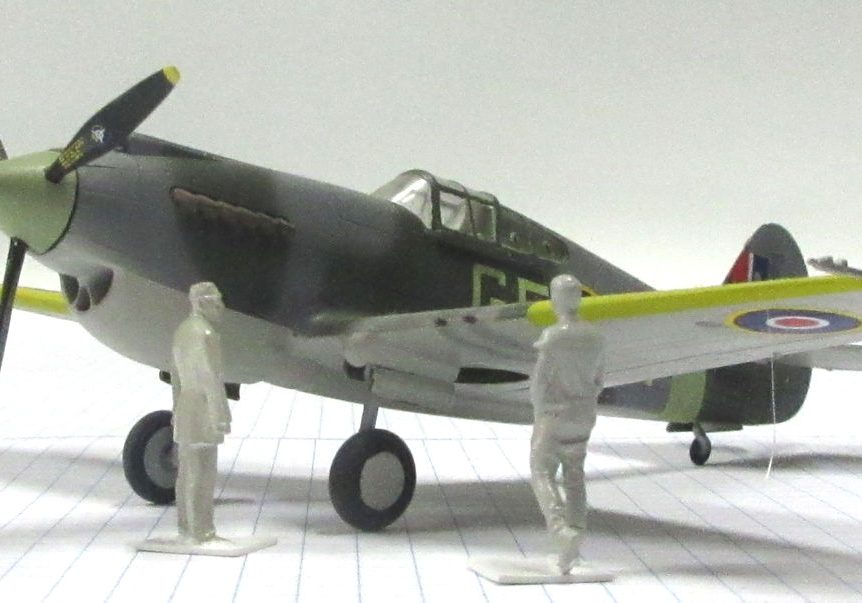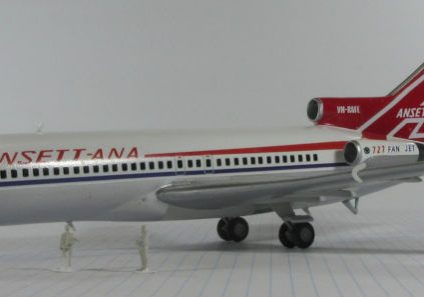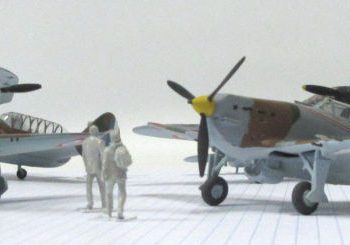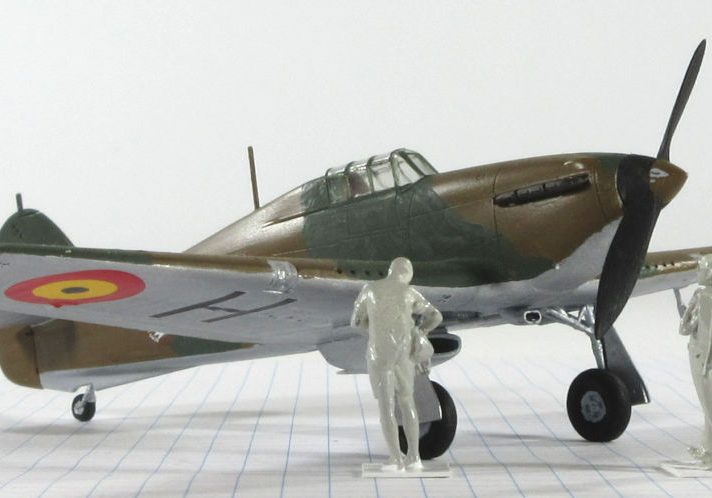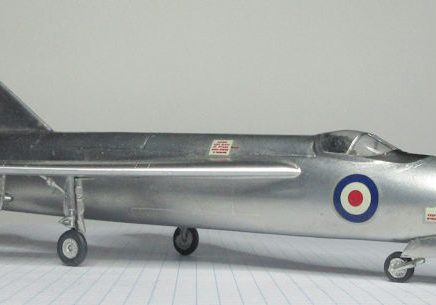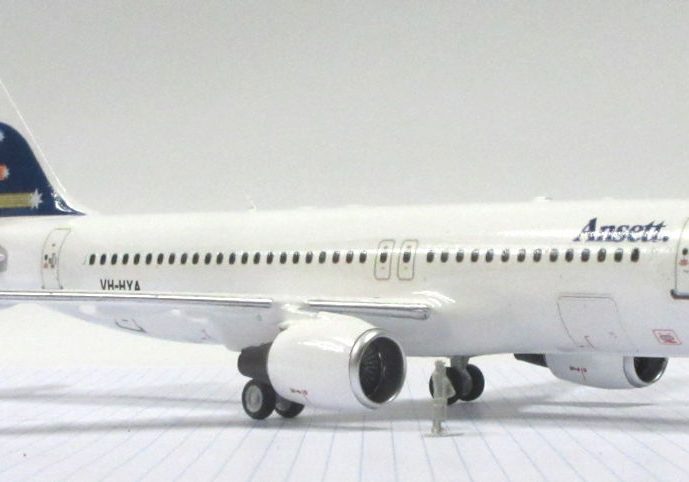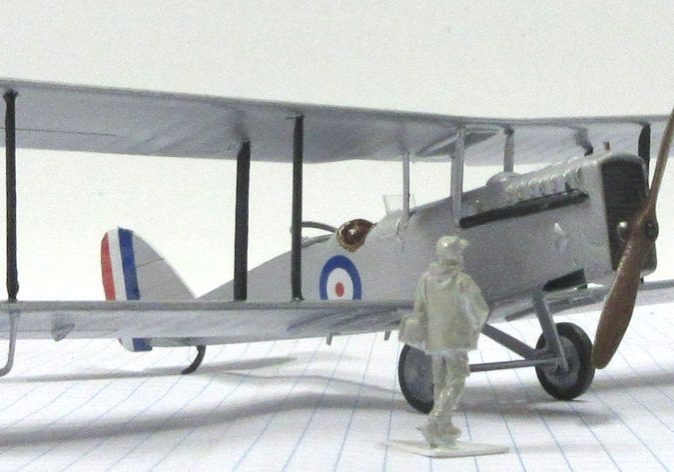The Curtiss P-40 fighter was one of the most important fighter aircraft of World War 2. It lacked the performance to compete with the best fighters that fought in the skies over Europe it was a capable fighter and fighter bomber but in other theaters of war. A total of 13,738 P-40s were manufactured between 1939 and 1944 and served in the air forces of 16 nations. It was produced in three major versions and many subversions. The P-40s that served with British air forces were called Tomahawks in the first versions and Kittyhawk in later versions.
Curtiss P-40B/C and Curtiss Tomahawk
The Curtiss Tomahawk was a version of the Curtiss P-40 that was ordered by the French Government. After the fall of France these aircraft were delivered to Britain. They were unsuitable for combat in Europe so most where sent North Africa where they were successful.
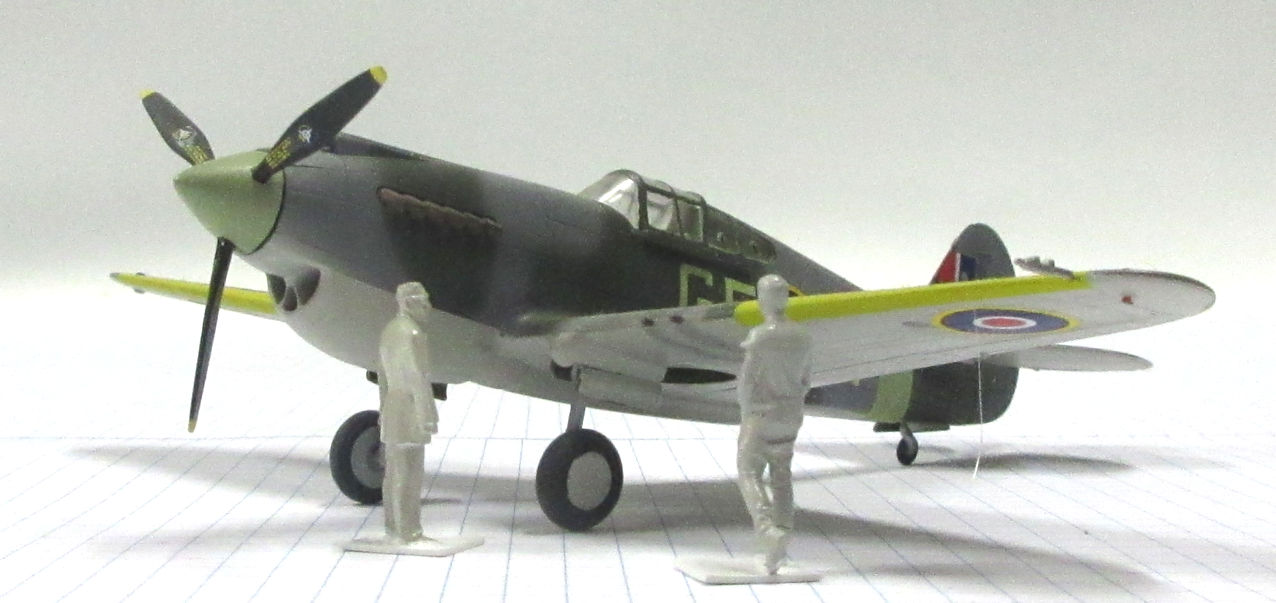 Curtiss Tomahawk I of 349 (Belgian) Squadron, RAF, at Lagos, Nigeria, in 1943
Curtiss Tomahawk I of 349 (Belgian) Squadron, RAF, at Lagos, Nigeria, in 1943
The Curtiss P-40B/C was the first version of the P-40 manufactured for the United States Army Air Corps. They were a slightly improved version of the original P-40 and began entering service in 1941.
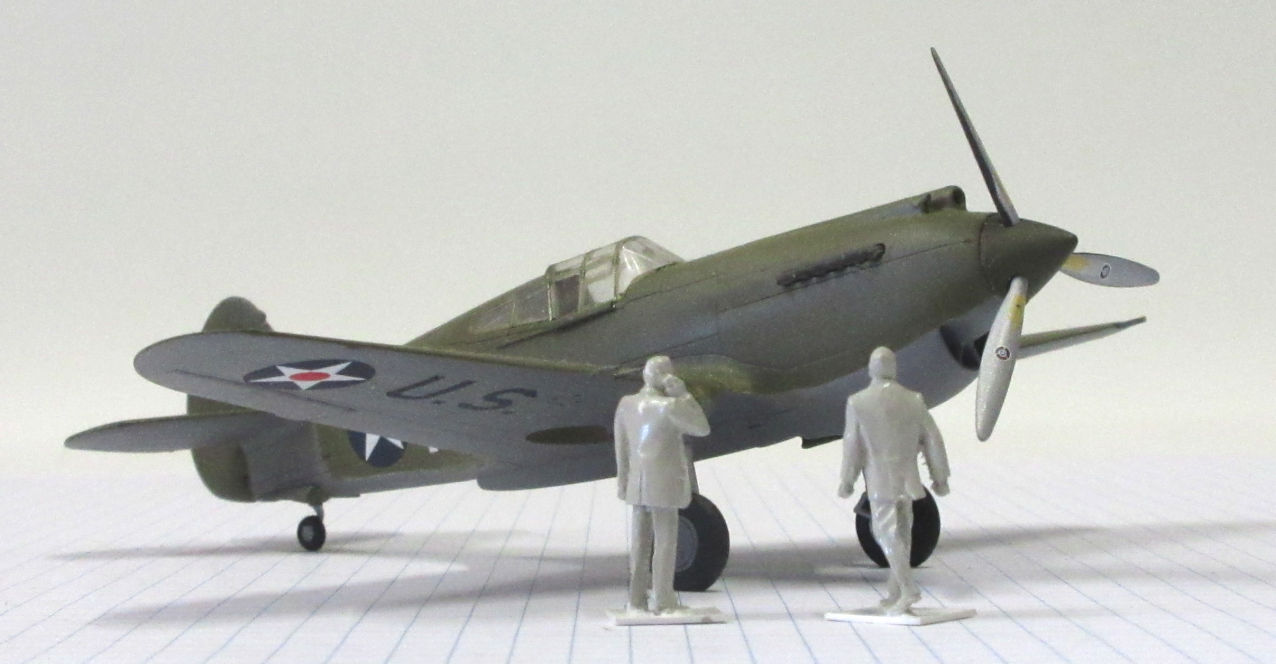 Curtiss P-40B of the 47th Pursuit Squadron, 15th Pursuit Group from Wheeler Field, Hawaii, on 7 December 1941
Curtiss P-40B of the 47th Pursuit Squadron, 15th Pursuit Group from Wheeler Field, Hawaii, on 7 December 1941
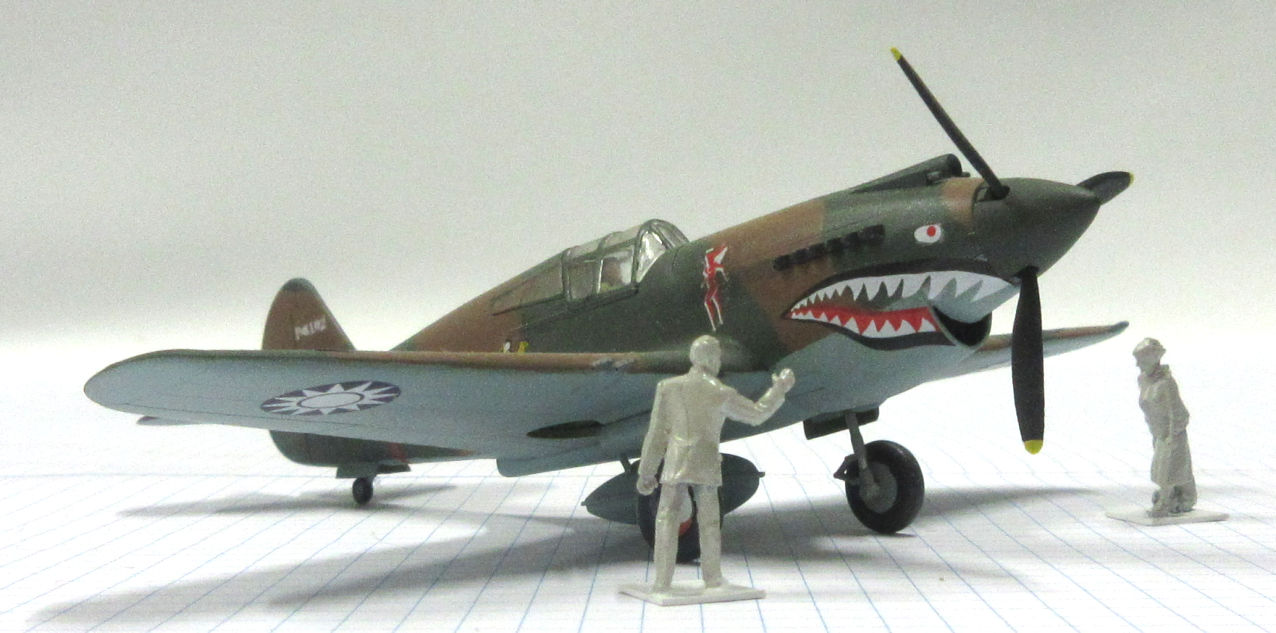 Curtiss P-40B of 3 Squadron, American Volunteer Group at Kunming in China in the Spring of 1942
Curtiss P-40B of 3 Squadron, American Volunteer Group at Kunming in China in the Spring of 1942
Curtiss Tomahawk Mk.IIA was the British name given to Curtiss P-40B. They were slightly improved version of the original P-40 with improved armament and armour and began entering service in 1941.
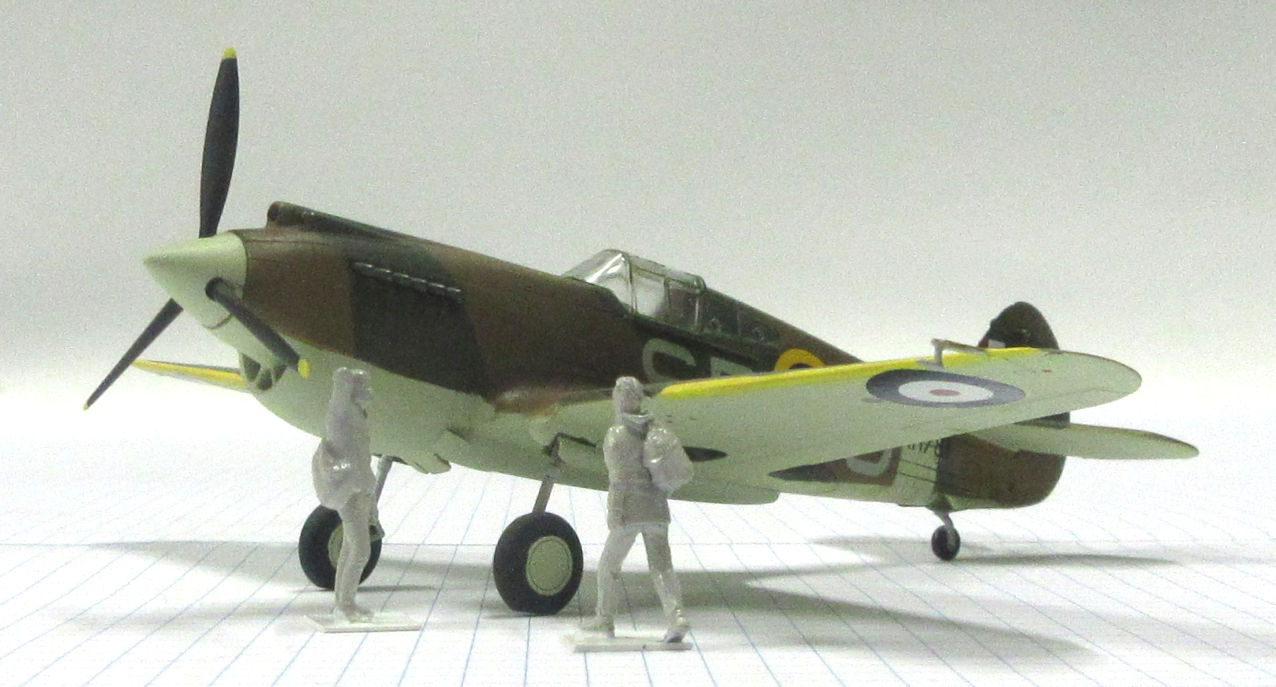 Curtiss Tomahawk IIA of 400 Squadron, Royal Canadian Air Force at Odiham, England in 1941
Curtiss Tomahawk IIA of 400 Squadron, Royal Canadian Air Force at Odiham, England in 1941
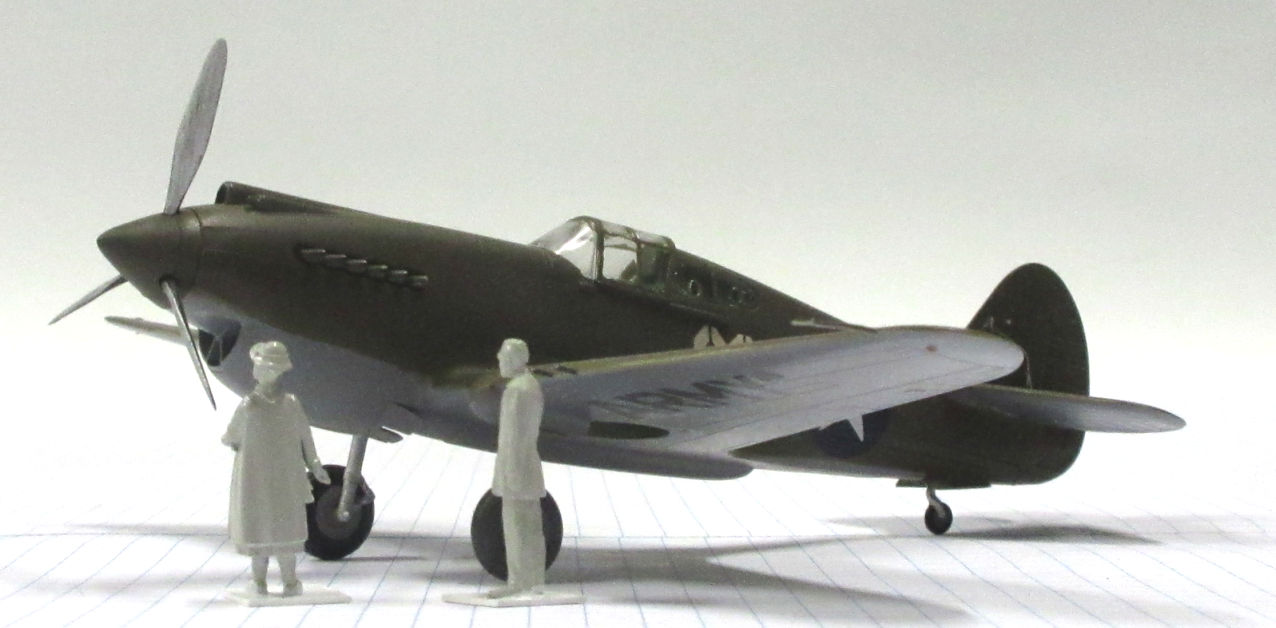 Curtiss P-40B believed to be flying with the 15th Pursuit Group during the attack on Pearl Harbour on 7 December 1941
Curtiss P-40B believed to be flying with the 15th Pursuit Group during the attack on Pearl Harbour on 7 December 1941
The Curtiss P-40C was the second version of the P-40 manufactured for the United States Army Air Corps. They looked the same as the earlier P-40B but had self sealing tanks which made them heavier and slightly reduced their performance.
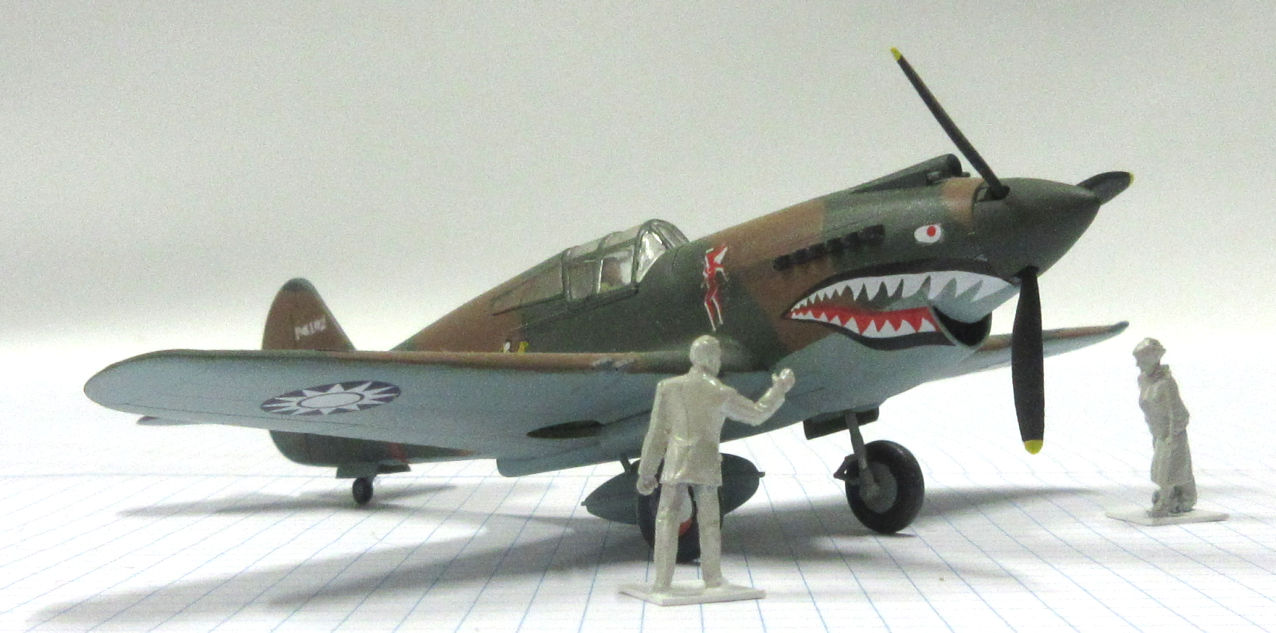 Curtiss P-40C flown by Charles Older, 3 Squadron, American Volunteer Group at Kunming in China in the Spring of 1942
Curtiss P-40C flown by Charles Older, 3 Squadron, American Volunteer Group at Kunming in China in the Spring of 1942
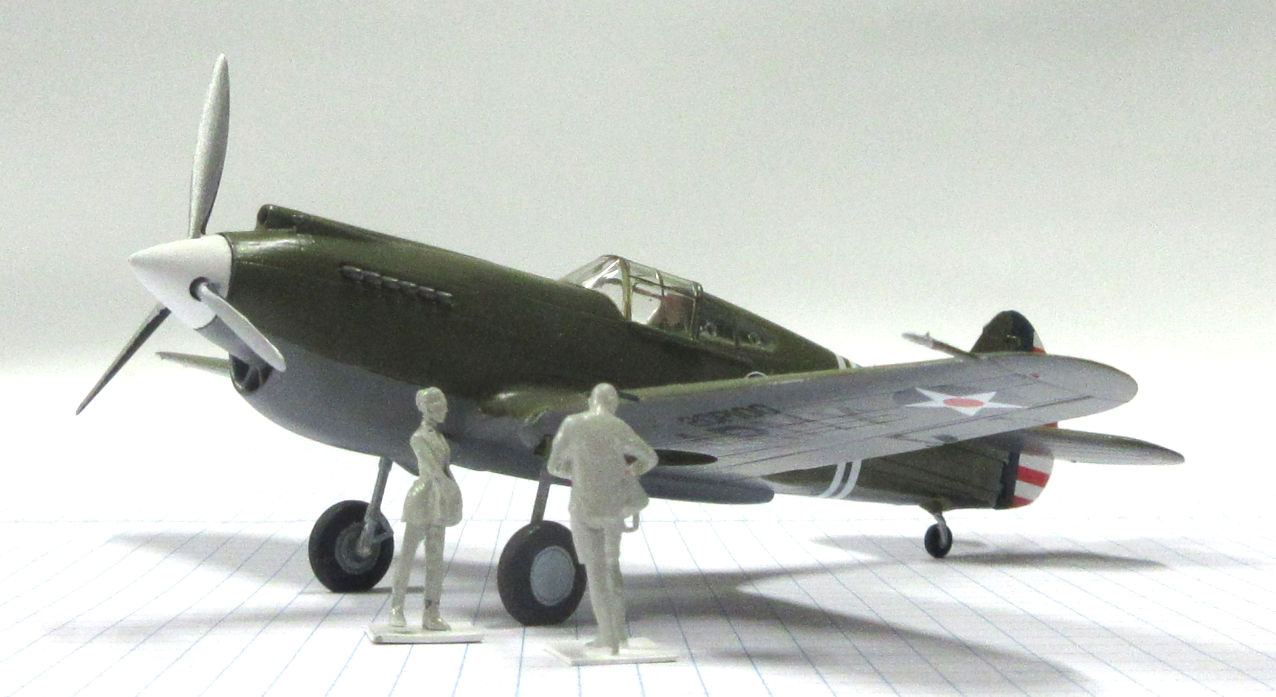 Curtiss P-40C flown by the 55th Pursuit Squadron, 20th Pursuit Group, USAAC, based in California in 1940
Curtiss P-40C flown by the 55th Pursuit Squadron, 20th Pursuit Group, USAAC, based in California in 1940
Curtiss Tomahawk IIB was the British name given to the Curtiss P-40C, the second version of the P-40 manufactured for the United States Army Air Corps. They looked the same as the earlier P-40B but had self sealing tanks which made them heavier and slightly reduced their performance.
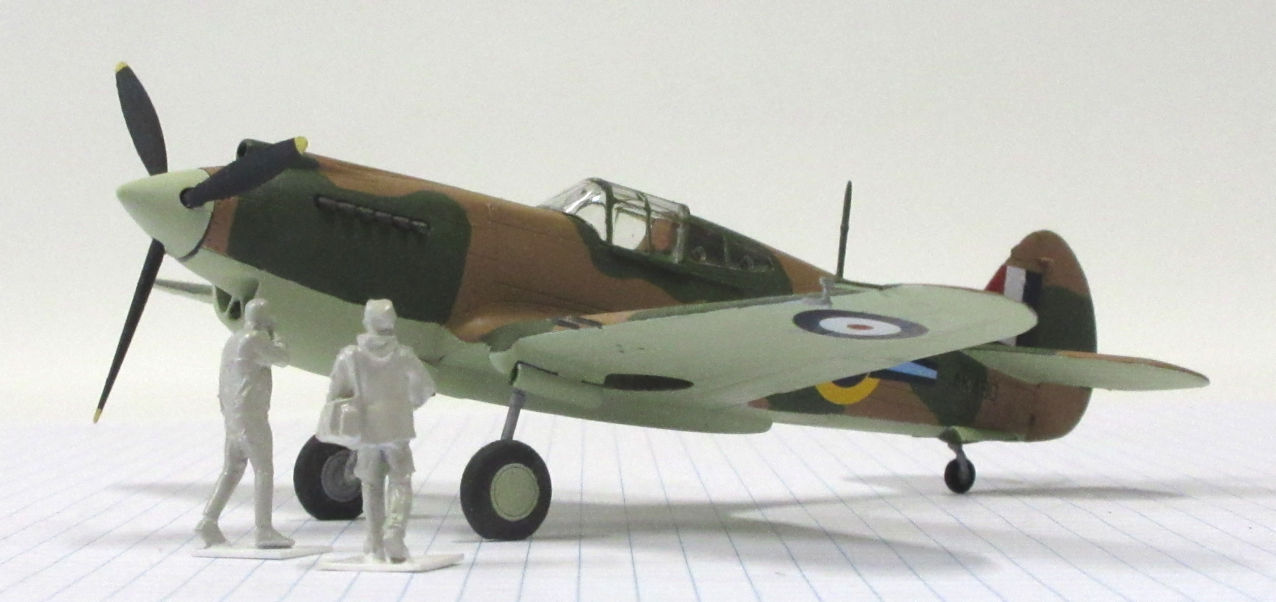 Curtiss Tomahawk IIb flown by Squadron Leader Peter Wykeham-Barnes of 73 Squadron, RAF, in Egypt in September 1941
Curtiss Tomahawk IIb flown by Squadron Leader Peter Wykeham-Barnes of 73 Squadron, RAF, in Egypt in September 1941
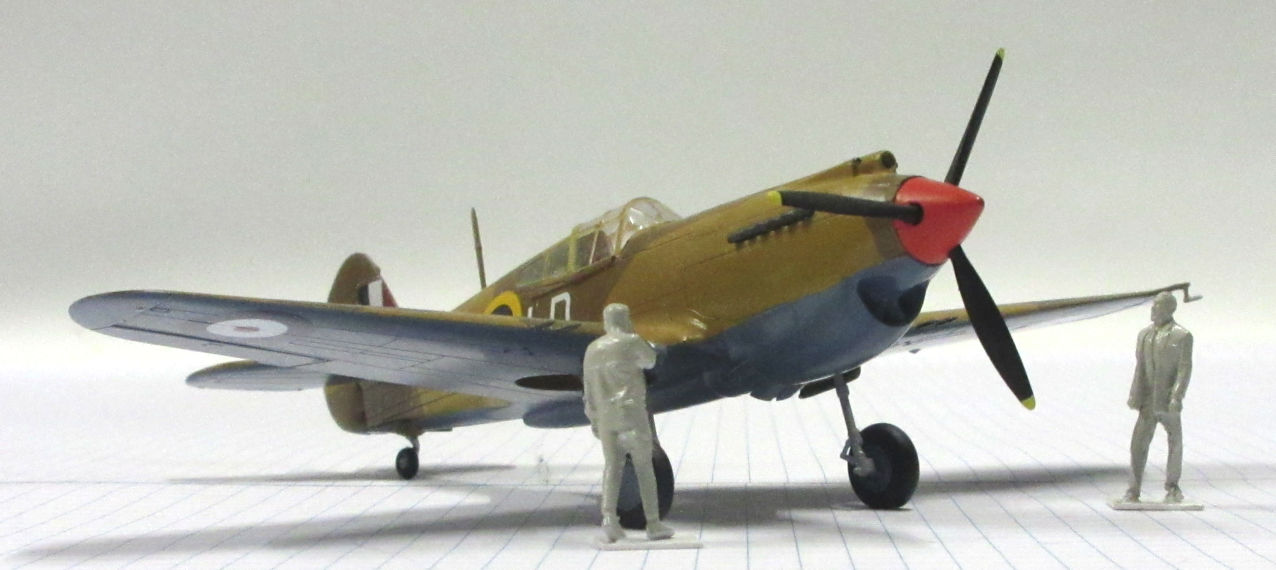 Curtiss Tomahawk IIb flown by Flight Lieutenant Clive Caldwell, 250 Squadron RAAF, Desert Air Force, November 1941
Curtiss Tomahawk IIb flown by Flight Lieutenant Clive Caldwell, 250 Squadron RAAF, Desert Air Force, November 1941
 Curtiss Tomahawk IIb flown by Pilot Officer Neville Duke, 112 Squadron RAF at Fort Maddalena, Lybia in 1941
Curtiss Tomahawk IIb flown by Pilot Officer Neville Duke, 112 Squadron RAF at Fort Maddalena, Lybia in 1941
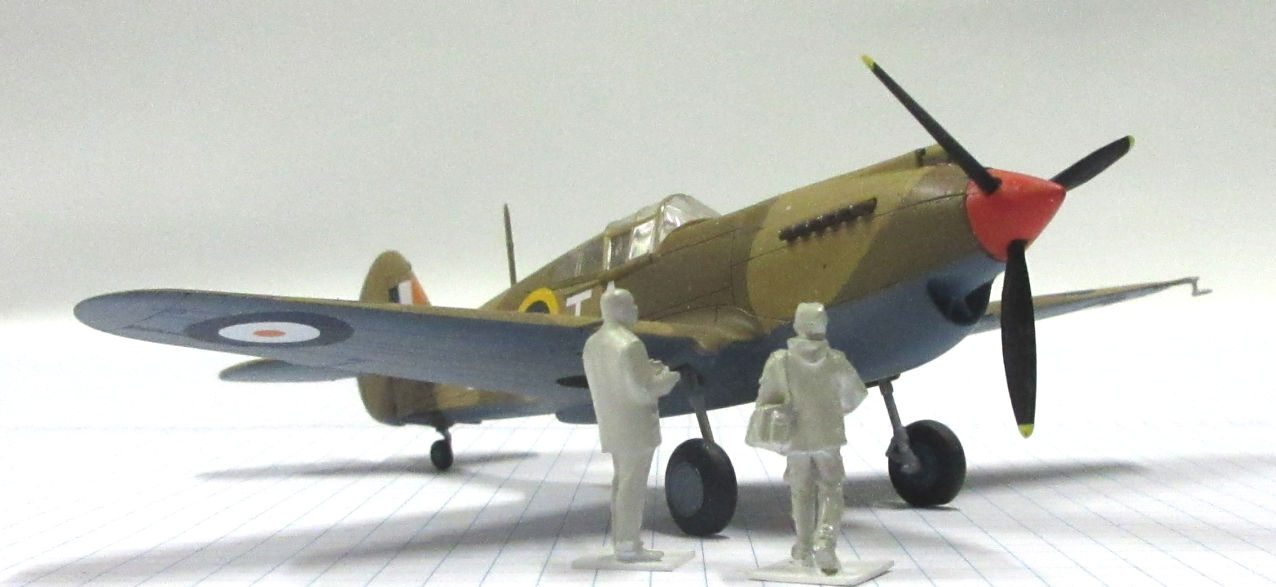 Curtiss Tomahawk IIb flown by Lieutenant Johnny Van Nus, 4 Squadron South African Air Force in June 1942
Curtiss Tomahawk IIb flown by Lieutenant Johnny Van Nus, 4 Squadron South African Air Force in June 1942
Curtiss P-40D to P-40M and Curtiss Kittyhawk I to Kittyhawk III
The Curtiss P-40E was an almost complete redesign of the P-40 based on the lessons learned in the first year of World War 2. The nose was redesigned for a more powerful engine and armament improved to six .50 cal machine guns in the wings. Deliveries began in August 1941. A total of 2,300 P-40Es were manufactured.
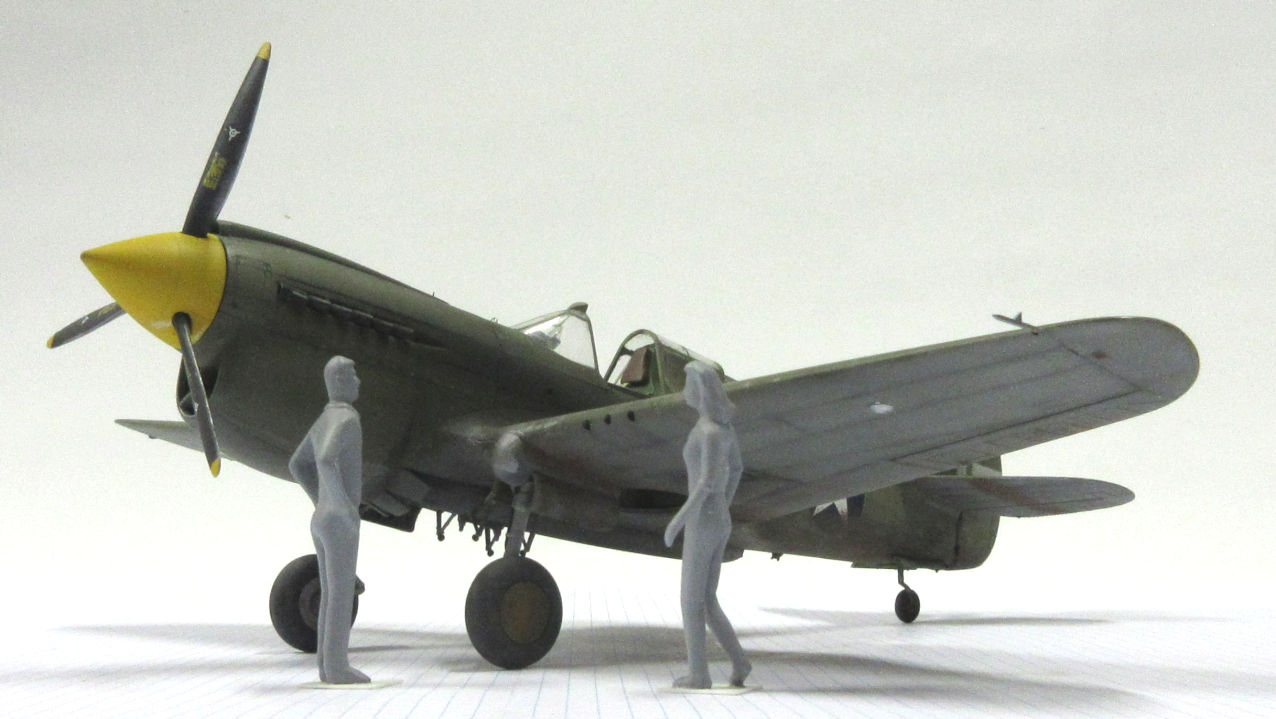 Curtiss P-40E from the 11thFS,343rd FG, 11th USAAF, stationed in the Aleutians in 1942/1943
Curtiss P-40E from the 11thFS,343rd FG, 11th USAAF, stationed in the Aleutians in 1942/1943
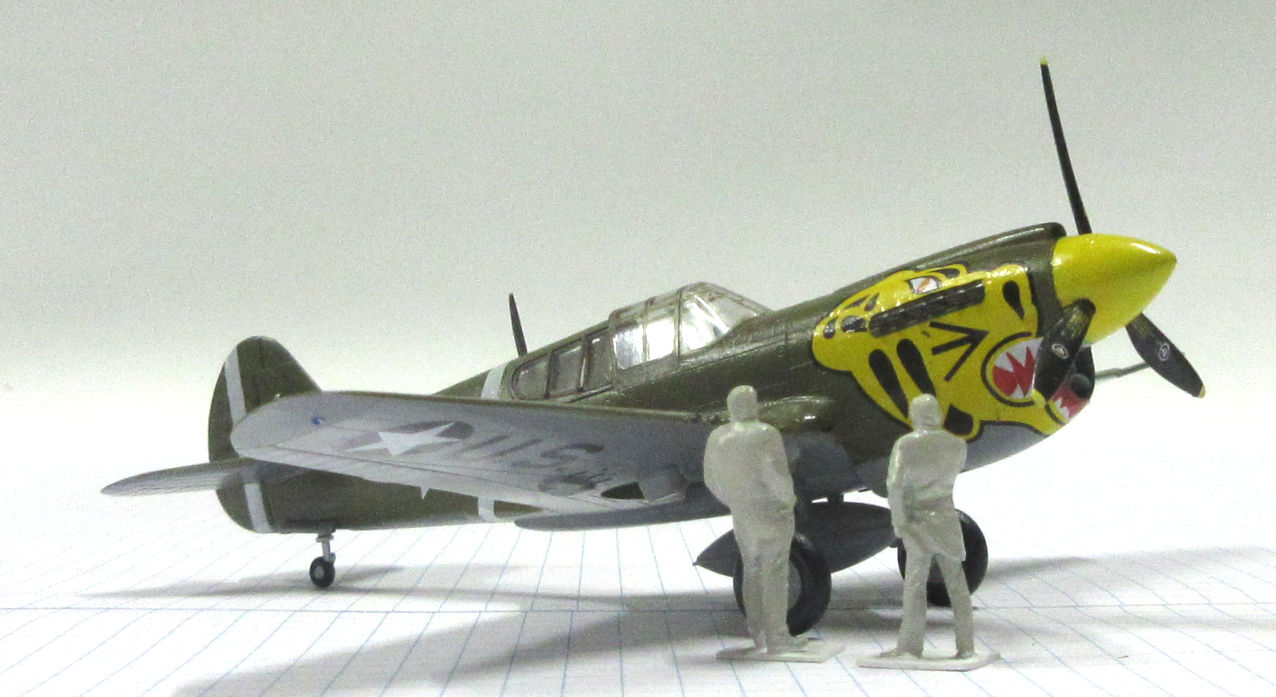 Curtiss P-40E of 11 Squadron, 343th Fighter Group in the Aleutians in 1942
Curtiss P-40E of 11 Squadron, 343th Fighter Group in the Aleutians in 1942
 Curtiss P-40E flown by First Lieutenant John D Landers of the 9 Squadron, 49th Fighter Group in New Guinea in 1942
Curtiss P-40E flown by First Lieutenant John D Landers of the 9 Squadron, 49th Fighter Group in New Guinea in 1942
 Curtiss P-40E flown by Lieutenant Andrew J Reynolds of the 49th Fighter Group based at Humpty Doo at Darwin in Spring 1942
Curtiss P-40E flown by Lieutenant Andrew J Reynolds of the 49th Fighter Group based at Humpty Doo at Darwin in Spring 1942
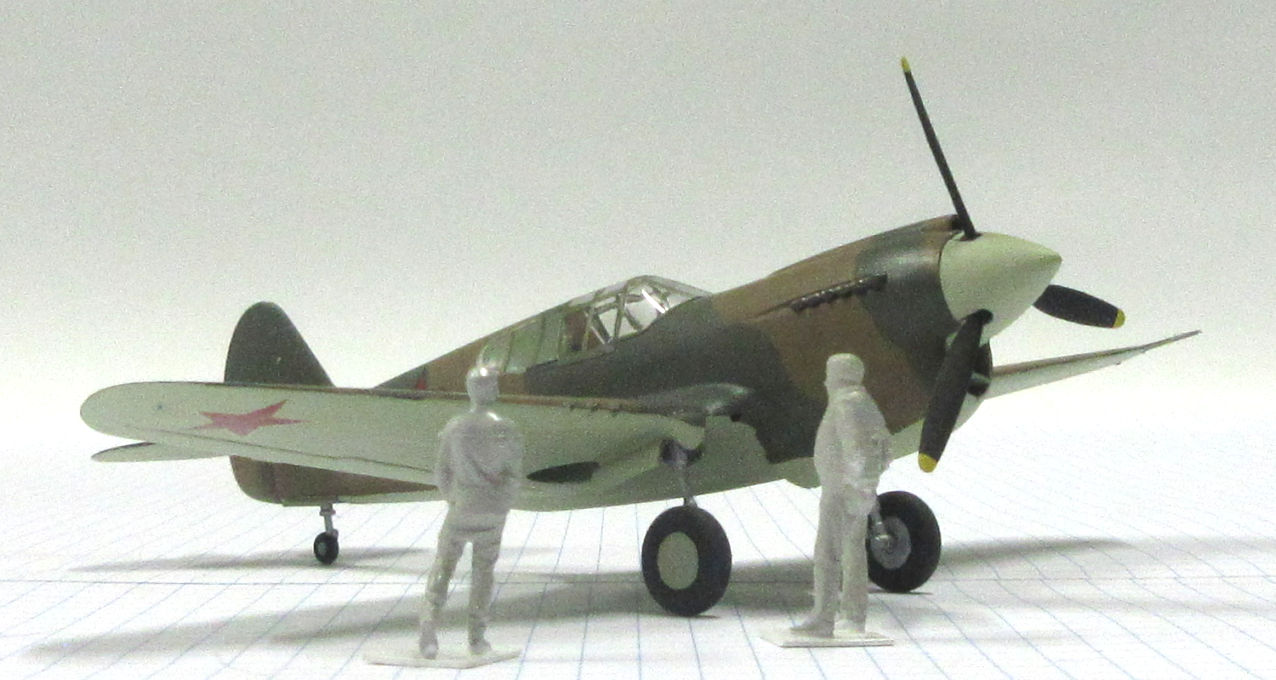 Curtiss P-40E flown by Captain N A Zelenov of the Red Army 154 IAP, at Leningrad in 1942
Curtiss P-40E flown by Captain N A Zelenov of the Red Army 154 IAP, at Leningrad in 1942
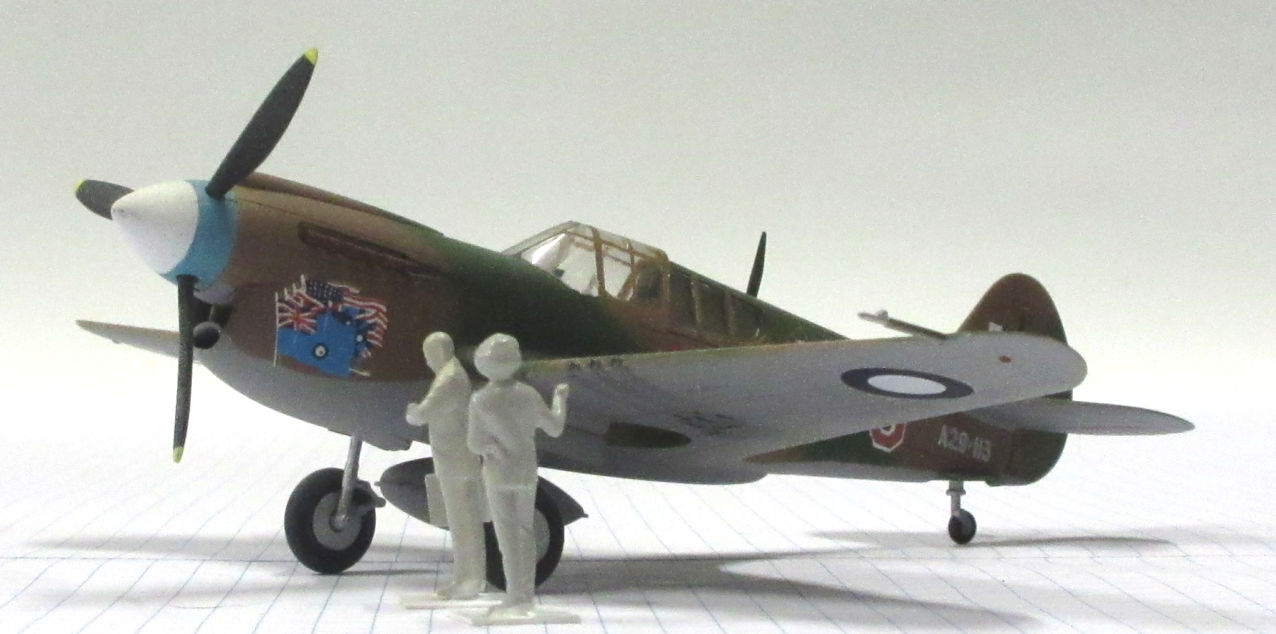 Curtiss Kittyhawk IA flown by Squadron Leader Richard Cresswell, 77 Squadron RAAF in New Guinea in 1942
Curtiss Kittyhawk IA flown by Squadron Leader Richard Cresswell, 77 Squadron RAAF in New Guinea in 1942
The Curtiss P-40K was a slightly modified Curtiss P-40E It has a more powerful engine which necessitated a slightly modified tail to maintain lateral stability. The P-40E was an almost complete redesign of the P-40 based on the lessons learned in the first year of World War 2. A total of 1,300 P-40Ks were ordered and deliveries began in 1943.
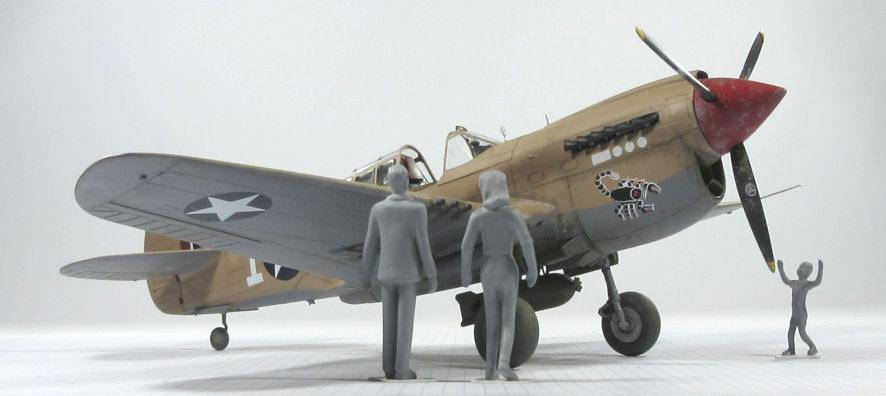 Curtiss P-40K-1 of the 64th FS/57th Fighter Group flown by First Lieutenant R J ‘Jay’ Overcash at Hani Main in Tunisia in April 1943.
Curtiss P-40K-1 of the 64th FS/57th Fighter Group flown by First Lieutenant R J ‘Jay’ Overcash at Hani Main in Tunisia in April 1943.
Curtiss P-40N and Curtiss Kittyhawk IV
The Curtiss P-40N (Kittyhawk Mark IV) was the final version of the P-40. Modifications included weight reduction, a more powerful engine and a revised cockpit canopy to improve pilot visibility. Deliveries began in 1944 and over 5,200 were manufactured. They were employed by many allied air forces in the later stages of the war.
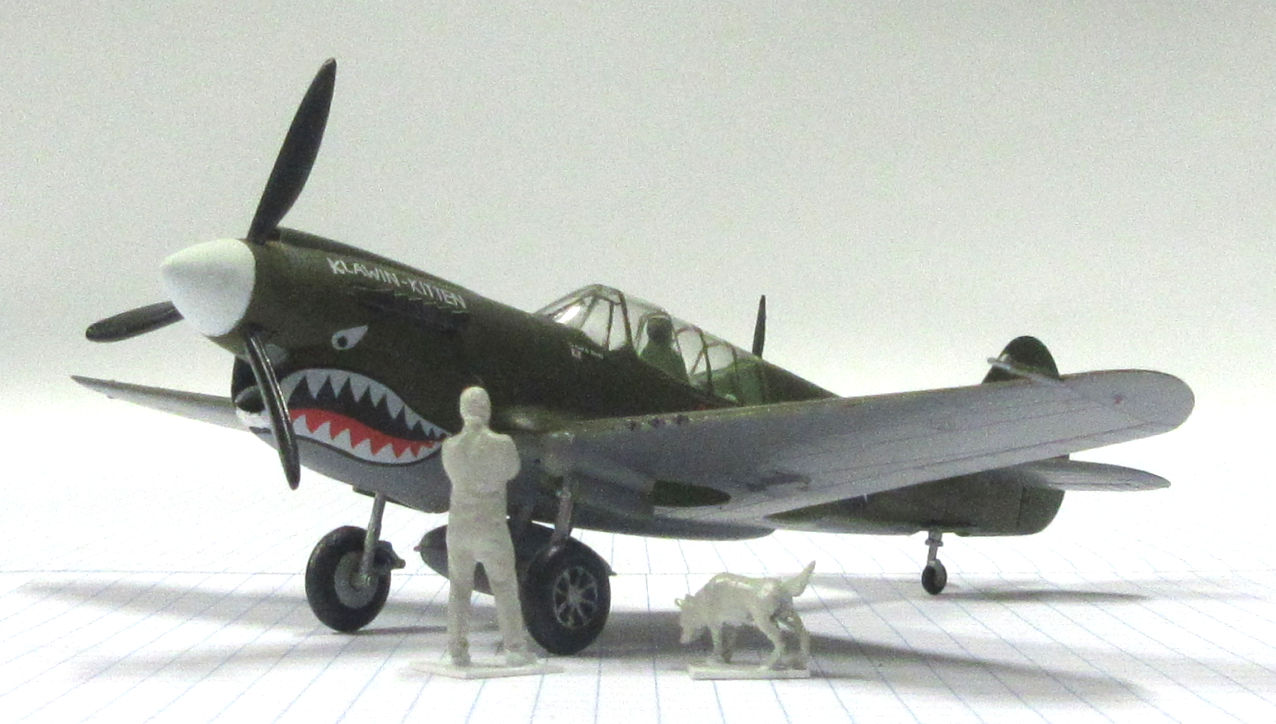 Curtiss P-40N flown by First Lieutenant Carl E Harby of 18 Fighter Squadron, 51st Fighter Group in China, Summer 1944
Curtiss P-40N flown by First Lieutenant Carl E Harby of 18 Fighter Squadron, 51st Fighter Group in China, Summer 1944
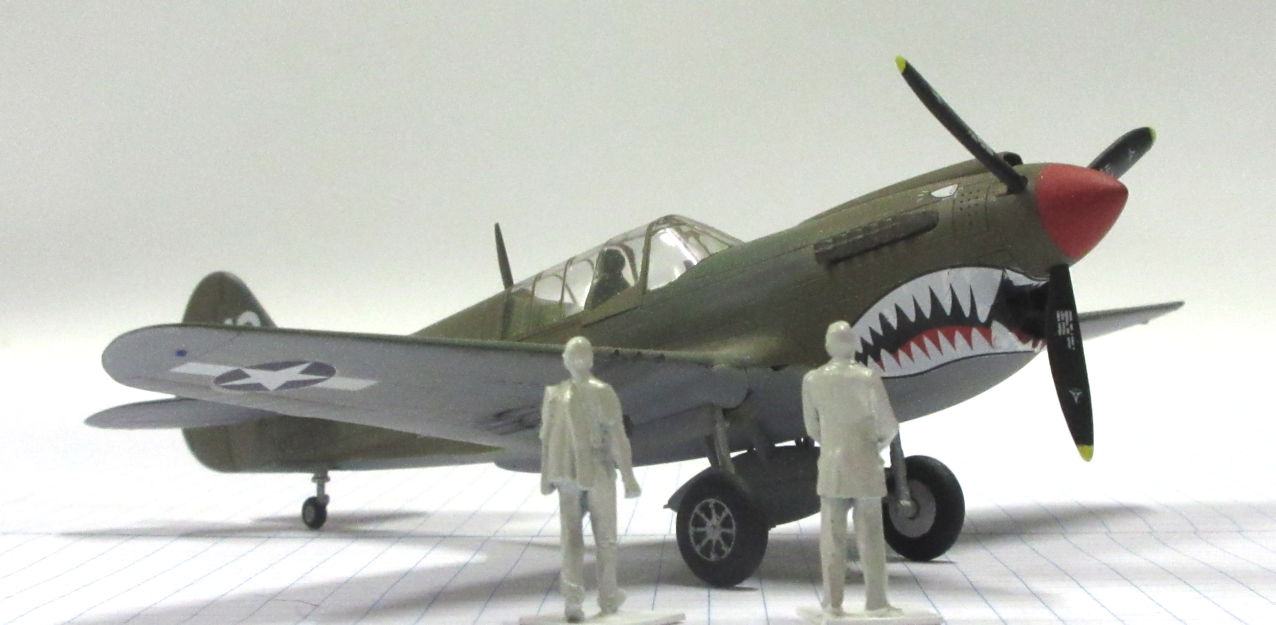 Curtiss P-40N flying with 74 Squadron, USAAF in Kwellin in China
Curtiss P-40N flying with 74 Squadron, USAAF in Kwellin in China
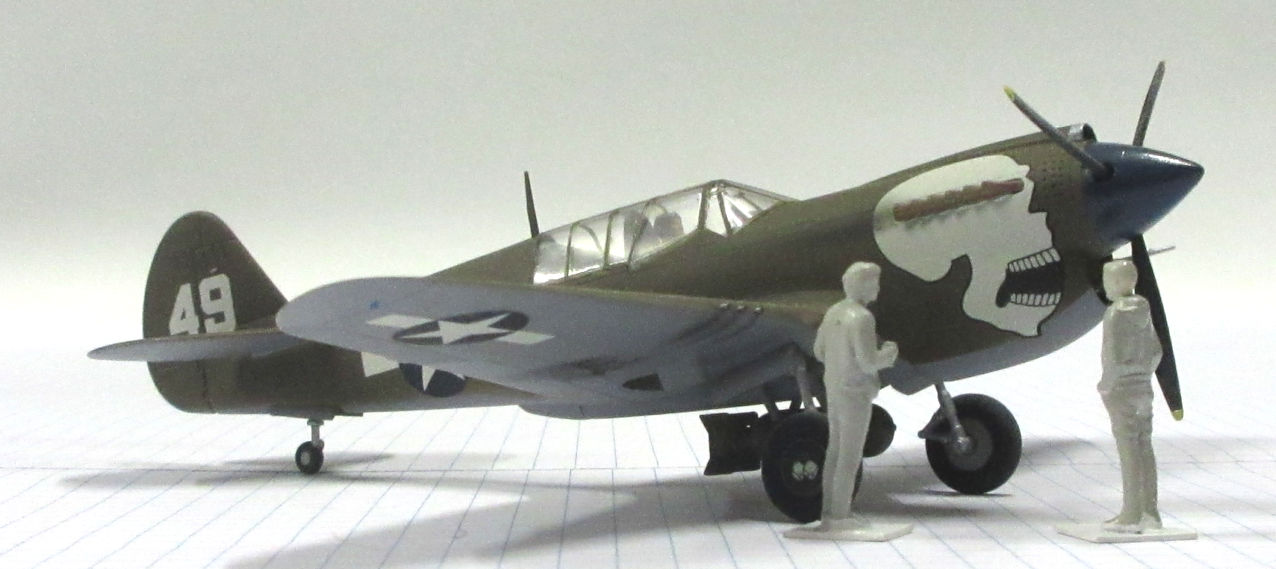 Curtiss P-40N of the 89th Fighter Squadron 80 Fighter Group from the Naggaghuli Base in the AssamValley, India, in 1944
Curtiss P-40N of the 89th Fighter Squadron 80 Fighter Group from the Naggaghuli Base in the AssamValley, India, in 1944
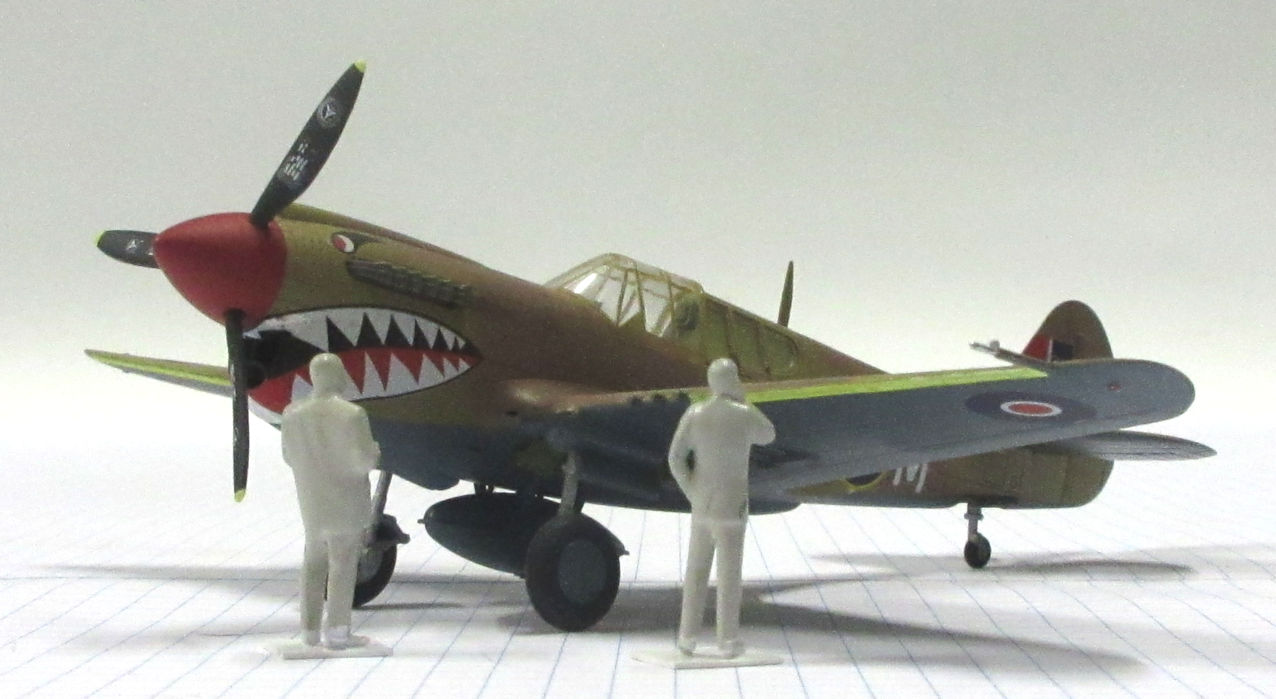 Curtiss Kittyhawk Mk III of 112 Squadron, RAF, in Sicily in 1943
Curtiss Kittyhawk Mk III of 112 Squadron, RAF, in Sicily in 1943
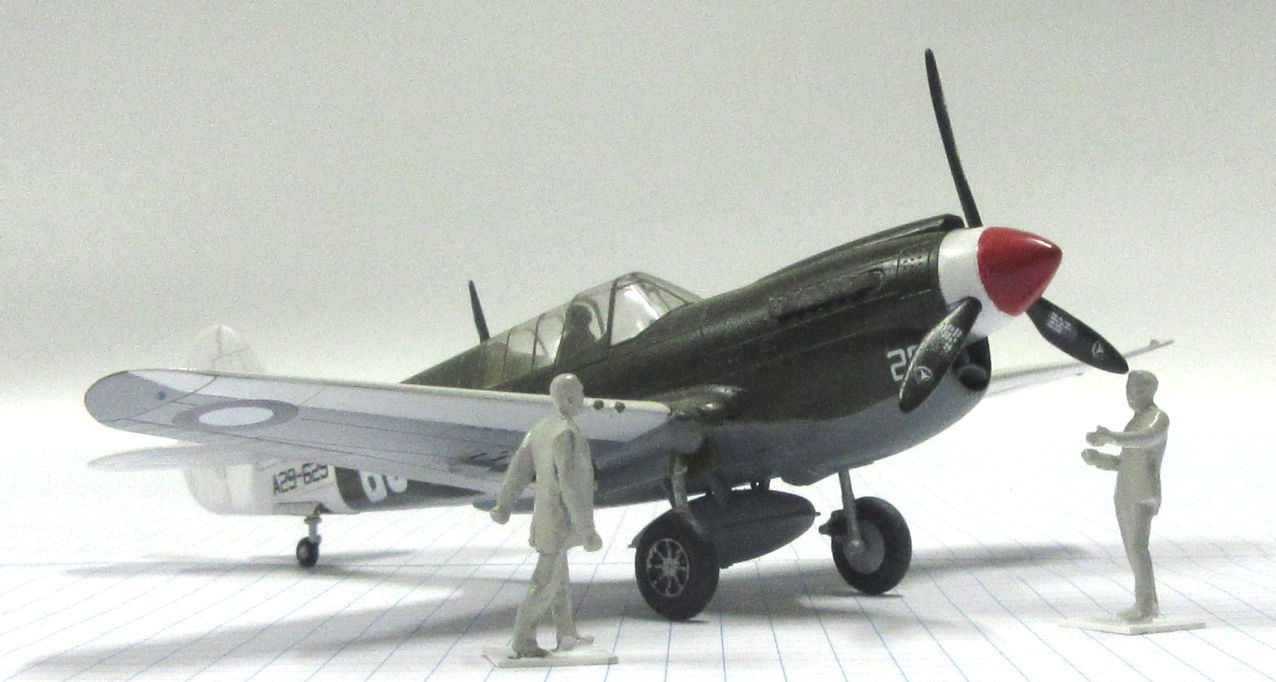 Curtiss Kittyhawk IV flown by G C Atherton, 80 Squadron, RAAF in New Guinea in 1945
Curtiss Kittyhawk IV flown by G C Atherton, 80 Squadron, RAAF in New Guinea in 1945
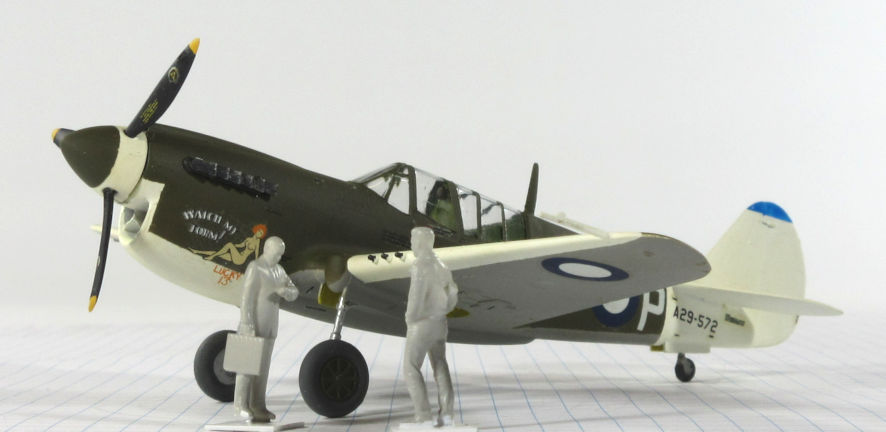 Curtiss Kittyhawk IV, 78 Squadron, Royal Australian Air Force, A29-572, at Noemfoor Island, South West Pacific Area, 1944
Curtiss Kittyhawk IV, 78 Squadron, Royal Australian Air Force, A29-572, at Noemfoor Island, South West Pacific Area, 1944
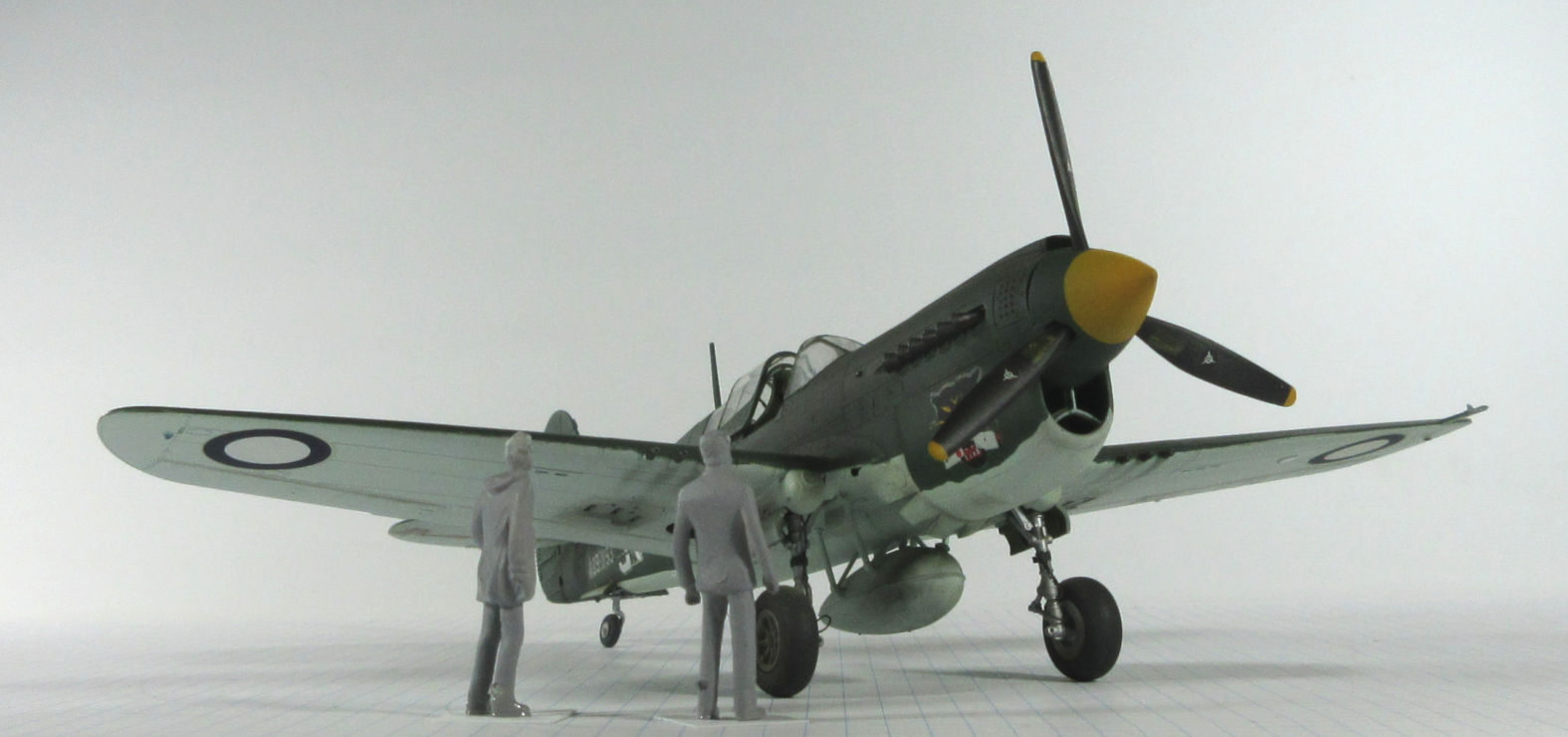 Curtiss Kittyhawk IV operated by 76 Squadron, RAAF, in the Borneo Campaign in the South West Pacific Area at the end of World War II
Curtiss Kittyhawk IV operated by 76 Squadron, RAAF, in the Borneo Campaign in the South West Pacific Area at the end of World War II
Curtiss XP-40Q
The Curtiss XP-40Q was the ultimate version of the Curtiss Hawk line that began with the P-36 of 1935. Despite its many refinements, it was not put into production as it was still outclassed by the contemporary P-47 and P-51 fighters.
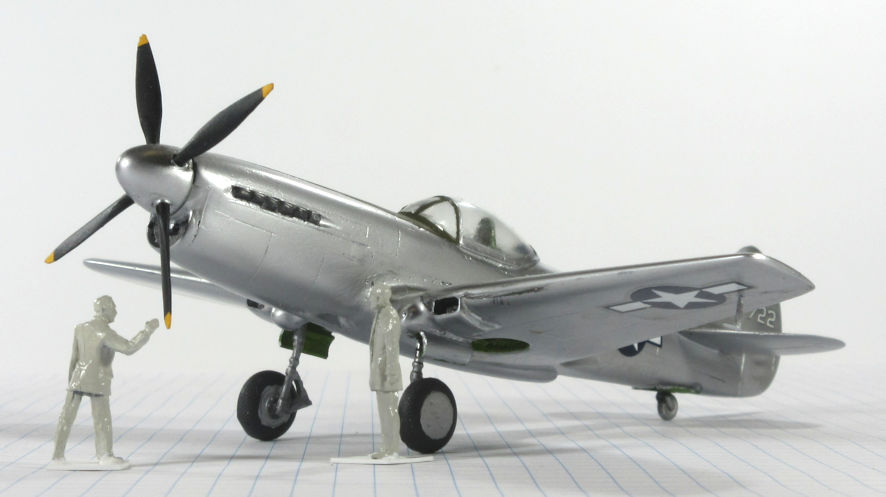 Curtiss XP-40Q second protoype in 1945
Curtiss XP-40Q second protoype in 1945
